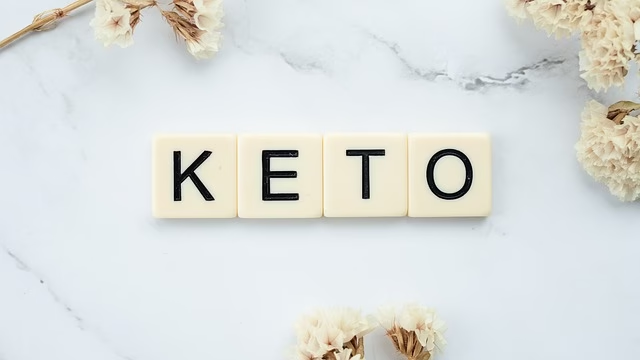Introduction to the Keto Diet for Beginners
Transitioning to a ketogenic diet may appear challenging at first glance. However, when approached correctly, the keto diet for beginners offers one of the most straightforward paths to weight loss and sustained energy. This comprehensive guide simplifies the process by providing:
✅ Clear guidelines about appropriate food choices (including printable shopping lists)
✅ Important foods to eliminate (highlighting common beginner pitfalls)
✅ An effortless 7-day meal plan (featuring uncomplicated recipes)
✅ Crucial advice for preventing “keto flu” symptoms
Whether your goal involves shedding a few pounds or undergoing a significant transformation, this keto diet for beginners resource delivers the fundamental knowledge for successful implementation.
Understanding the Keto Diet for Beginners
The ketogenic diet operates on three foundational principles that beginners should comprehend:
First, carbohydrate intake drops dramatically to 5-10% of total calories, typically translating to 20-50g net carbs daily. Consequently, the body must seek alternative energy sources.
Simultaneously, healthy fat consumption increases substantially, comprising 70-80% of caloric intake. These fats become the primary fuel source.
Meanwhile, protein intake remains moderate at 20-25% of calories, sufficient for muscle preservation without disrupting ketosis.
After several days of carbohydrate restriction, the body enters ketosis – a metabolic state where fat becomes the preferred energy source instead of glucose. Most beginners observe multiple benefits including:
Initial rapid water weight reduction during the first week
Noticeable decrease in hunger and food cravings
Consistent energy levels throughout the day
Enhanced mental clarity and focus
Essential Foods for the Keto Diet for Beginners
Healthy Fat Sources for Beginners
Avocados and their derived oil provide excellent monounsaturated fats. Similarly, coconut oil and MCT oil offer rapid energy through medium-chain triglycerides.
Olive oil and whole olives contribute heart-healthy fats. Furthermore, various nuts and seeds like almonds, walnuts, and chia seeds deliver beneficial fats and fiber.
Full-fat dairy products including cheese, butter, and heavy cream also serve as valuable fat sources. However, individuals with dairy sensitivities should exercise caution.
Appropriate Protein Options
Pasture-raised eggs represent an ideal protein source. Additionally, fatty fish such as salmon and sardines provide omega-3 fatty acids.
Various meats including beef, pork, and lamb offer complete protein profiles. Similarly, poultry with skin maintains proper fat ratios.
Low-Carbohydrate Vegetables
Leafy greens like spinach and kale contain minimal net carbs. Moreover, cruciferous vegetables including cauliflower and broccoli provide essential nutrients.
Other suitable options consist of zucchini, mushrooms, and asparagus. These vegetables add variety while keeping carbohydrate intake low.
Foods to Avoid on the Keto Diet for Beginners
High-Carbohydrate Pitfalls
Traditional grain products like bread, pasta, and rice contain excessive carbohydrates. Likewise, starchy vegetables such as potatoes disrupt ketosis.
Most fruits, except limited portions of berries, contain too much sugar. Similarly, beans and legumes prove too carbohydrate-dense for keto.
All sugary foods and beverages must be eliminated completely. Otherwise, they will prevent the body from entering ketosis.
Processed Food Concerns
Low-fat dairy products often contain added sugars. Additionally, industrial seed oils like soybean, corn, and canola oil promote inflammation.
Processed meats frequently include hidden carbohydrates and additives. Therefore, careful label reading remains essential.
Sample 7-Day Meal Plan for Keto Beginners
Day One Meal Structure
Breakfast features scrambled eggs with melted cheese and sliced avocado. For lunch, a chicken Caesar salad without croutons provides satisfying nutrition.
Dinner consists of a bunless bacon cheeseburger accompanied by roasted broccoli. This combination delivers adequate fats and proteins.
Day Two Nutritional Approach
A keto smoothie made with almond milk, spinach, and protein powder serves as breakfast. At midday, tuna salad stuffed avocados create a fulfilling lunch.
Garlic butter steak with mashed cauliflower completes the day’s eating. This meal exemplifies proper keto macronutrient ratios.
(Additional days follow this same balanced pattern)
Common Mistakes for Keto Beginners
Insufficient fat consumption often leads to hunger and fatigue. Conversely, excessive protein intake may inadvertently prevent ketosis.
Electrolyte imbalance frequently causes “keto flu” symptoms. Therefore, proper supplementation proves necessary.
Many beginners abandon the diet prematurely before full adaptation occurs. Typically, this metabolic adjustment requires 2-3 weeks.
Frequently Asked Questions
What weight loss can beginners expect?
Initial water weight loss of 2-10 pounds is common, followed by 1-3 pounds weekly of fat loss.
Are any fruits permitted?
Small portions of berries are acceptable, while high-sugar fruits should be avoided.
Is long-term keto safe for beginners?
Yes, though periodic carb cycling after several months may provide additional benefits.

